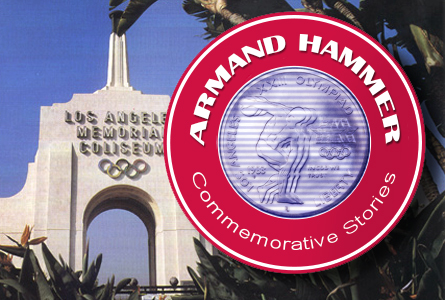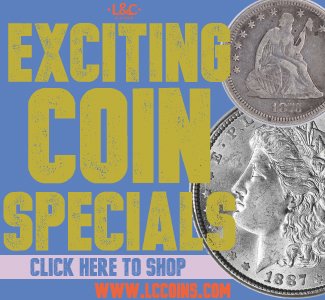Warrington proposed a marketing and distribution plan that centered on the government keeping control of the Olympic coin program but hiring experts in program management, advertising, direct mail, and promotions to handle the program’s day-to-day activities.
He explained that his firm would be very interested in selling the coins for the government on a consignment basis and envisioned an arrangement in which his company would need to realize a profit of just $1 per coin to make it worth their while. He stated that there was no need to establish a new private company to market the coins – referring to the Coin Group – but that the program would benefit from the government contracting outside experts.
In support of his claim, he referred to the government’s failed sales and marketing efforts in regards to the launch of the Susan B. Anthony dollar, citing how it “made a mockery of so many principles of selling that the effort was doomed from the start.”
Representative St. Germain was the first to question Warrington and quickly moved to discredit his firm by bringing up a past federal indictment against the company involving the illegal movement of over $10 million in currency from the Philippines to the US.
It was a clear attempt by St. Germain to protect the Occidental-Lazard Freres Coin Group, which was backing his coin legislation.
Annunzio stepped in to commend St. Germain for exposing the indictment against Deak-Perera, but also reminded the committee of the legal issues faced by the Franklin Mint and how they caused the firm to drop out of the Coin Group venture.
The exchange was typical of the “point-counterpoint” tactics used by Annunzio and St. Germain throughout the hearings.
 Under further questioning, Warrington was unable to sway the committee on the merits of his proposed consignment model for the sale and distribution of the Olympic coins. Annunzio thanked him for coming before the committee, but essentially closed the door on the Deak-Perera proposal by stating his belief in the ability of the United States Mint to generate significant coin sales and revenue for the Olympic committees. He further commented that “we would just be giving away a dollar” if the proposal was accepted.
Under further questioning, Warrington was unable to sway the committee on the merits of his proposed consignment model for the sale and distribution of the Olympic coins. Annunzio thanked him for coming before the committee, but essentially closed the door on the Deak-Perera proposal by stating his belief in the ability of the United States Mint to generate significant coin sales and revenue for the Olympic committees. He further commented that “we would just be giving away a dollar” if the proposal was accepted.
Next to come before the committee were Dr. Armand Hammer of Occidental Petroleum, Thomas Mullarkey of Lazard Freres, and J. Donald Gartland III, a coin marketing consultant hired by the Coin Group.
The three were present to testify on behalf of the Coin Group and its desire to be the marketing organization for the US Olympic coin program.
Hammer was the first to make a statement and acknowledged that the potential profit from the marketing of the Olympic coins was an important driver behind the Coin Group’s interest, but he also noted the importance of the coin program to the Olympic committees and believed that the Coin Group could produce the best financial results for them. He commented that it was the desire to help the committees that drove the Group’s willingness to offer them a guaranteed $30 million dollars regardless of the number of coins sold or whether they made a profit or loss on their sale.
Hammer discussed the Coin Group’s involvement in the coin program for the 1980 Moscow Olympics, and stated his belief that this experience gave the Coin Group “confidence in our ability to carry out a successful coin program and our conviction that the marketing of the coins must be carried out by someone other than a Government agency.” To illustrate the Coin Group’s support of US Olympic athletes and the USOC, he related how it paid the USOC over $400,000 from its own Moscow coin proceeds after the US decided to boycott the Games even though it had no legal obligation to do so.
Hammer also defended the propriety of his company’s efforts on behalf of the Moscow program by revealing that the volatility in the precious metals market at the time resulted in many coins being sold at prices less than their melt value. All such orders were filled, however, because members of the Coin Group believed it was the proper thing to do. He cited such a scenario as one of the significant risks involved in the sale of Olympic coins and how such risks are “best borne by the private sector and cannot readily be handled by a government agency.”
He concluded his remarks by expressing his support for St. Germain’s bill and stating his belief that once the full Congress had the chance to review and compare it with the alternatives, it would express its support as well.

Thomas Mullarkey, a Partner at Lazard Freres, was the next to testify. He opened his testimony by briefly outlining how the LAOOC’s consideration of an Olympic coin program dated to the winter of 1980. The Committee believed that a successful coin program would create a fitting commemorative of the Games in addition to helping raise much needed revenue for its staging of the Games and for the USOC’s support of amateur athletics in the US.
Article Continues on the Following Page(s) ……….




